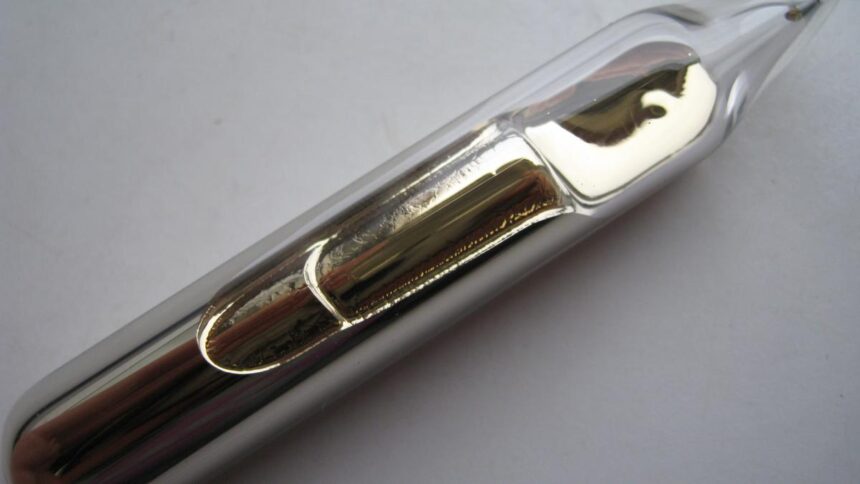Bunsen, the Burner
German chemist Robert Bunsen was born on March 30, 1811, in Gottingen. His father taught modern languages at the University of Gottingen, and Bunsen earned his doctorate there. Before returning to Gottingen as a lecturer, he traveled across Europe for three years. He taught at the Universities of Marburg and Breslau, but is best known for his work at Heidelberg, where he taught from 1852 until his death in 1899. Bunsen never married but lived for his students and his laboratory, setting up an excellent lab and remaining popular with his pupils.
Bunsen was first drawn towards organic chemistry and produced what remains one of the most effective antidotes for arsenic poisoning – iron oxide hydrate. However, he lost one of his eyes when working with cacodyl cyanide, an arsenic compound, forcing him to move to other disciplines.
In case you feel familiar with the name Bunsen, that’s because you might have encountered the Bunsen burner in your chemistry labs. Along with his laboratory assistant Peter Desaga, he built the device that now bears his name in 1855. Part of chemistry labs across the world, Bunsen burners enabled its inventor to study emission spectra from heated elements. He put it to great effect and showcased the power of spectroscopy as a tool for scientific research.
Kirchhoff’s Key Contributions
Born on March 12, 1824, nearly 13 years after Bunsen, in Konigsberg, Prussia (now Kaliningrad, Russia), Gustav Robert Kirchhoff is a German chemist, mathematician, and physicist. He married the daughter of his mathematics professor and the couple moved to Berlin soon after their wedding.
At the University of Breslau, where he became a professor at the young age of 26, Kirchhoff first encountered Bunsen. The duo would go on to do great things together, but Kirchhoff has plenty of claims to fame on his own.
Both Kirchhoff’s laws of electrical circuits and Kirchhoff’s laws of thermodynamics are, unsurprisingly, named after him in his honour. He made fundamental contributions in helping understand the emission of black-body radiation by heated objects, electrical circuits, and spectroscopy. The term "black body," in fact, was coined by Kirchhoff in 1860, the same year he discovered caesium with Bunsen. He also used emission spectra to study the sky and identified 30 elements in the sun.
Bunsen-Kirchhoff Partnership
In 1854, Bunsen convinced Kirchhoff to move to Heidelberg in order to facilitate their collaboration further. They were working on research to try and prove that all pure elements have a distinct spectrum that they emit. While work in this field was already on for nearly a century, if not more, such studies lacked the systemic approach and careful examination that this duo wanted to bring to the table.
Partnering for this work in 1859, Bunsen suggested using filters to block colours like the yellow of sodium compounds. He believed that such an arrangement would facilitate the detection of less intense colours that are also emitted by other elements.
Meanwhile, Kirchhoff wanted to adapt a method that a couple of others – English mathematician and astronomer John Frederick William Herschel, and English scientist, inventor, and photography pioneer William Henry Fox Talbot – had employed a few decades earlier. He wanted to improve Bunsen’s technique by adapting the Herschel/Talbot method wherein light was passed through a prism. Bunsen and Kirchhoff effectively came up with their version of the spectroscope.
In 1860, the duo analysed the spectral lines of spring water from Durkheim. Known to be rich in lithium compounds, Bunsen noticed something different in the spectra. Apart from the expected spectral lines from sodium, lithium, and potassium, Bunsen also identified a new sky-blue doublet that he hadn’t seen before. He named the new element caesium, naming it after the Latin word for “sky blue.” The duo made their discovery public by announcing it on May 10, 1860.
Having managed to get just 2 mg of caesium chloride from 10 litres of spa water, Bunsen commissioned a nearby chemical factory to evaporate 12,000 gallons of spring water in order to isolate caesium and study its properties. Even though he failed to obtain pure caesium, he was able to establish the relative atomic mass of the element as 128.4 (we know that 132.9 is the value now).
Bunsen and Krichhoff went on to observe the presence of another alkali metal in spa water by observing dark red in the spectral lines. They named this element rubidium, again from the Latin for “dark red.” While the duo were successful in isolating rubidium, they couldn’t replicate the success in the case of caesium.
Setterberg Isolates Caesium
The credit for first isolating caesium goes to Swedish chemist Carl Theodor Setterberg. Born in 1853 in Skaraborg, Sweden, Setterberg set about living a lifetime as an industrial chemist. When doing research for his PhD, August Kekule – his supervisor and professor of chemistry at the University of Bonn – tasked him with isolating caesium.
Following the extraction of lithium from lepidolite, an ore of the mica group, there’s a lot of waste material that remains. Setterberg decided to use this as his starting point for isolating caesium. The waste ore was converted into a mixture of potash alum, along with those of rubidium and caesium. With the help of fractional crystallisation, Setterberg was sure he could separate the alum salts.
This is exactly what happened as Setterberg started off with around 350 kg of the waste ore, before finishing with 10 kg of a caesium compound. This was more than Bunsen ever had, allowing Setterberg to try different techniques to isolate caesium.
After a failed experiment when he tried the carbon reduction method that Bunsen had successfully used to obtain rubidium, Setterberg switched to electrolysis. Setterberg found that cyanide-based mixtures of caesium salts were ideal for his purpose as he successfully isolated the element in 1882. He went on to describe some of its properties in the same year, giving its melting point and density. Setterberg’s contribution, however, is often missed out when talking about the discovery of caesium.
Caesium Facts
A chemical element with symbol Cs and atomic number 55. It is highly reactive and is a soft, silvery-gold alkali metal. A liquid just above room temperature, caesium has a melting point of 28.4 °C. The current definition of a second is based on caesium. The most famous use of caesium is in the atomic clock.








